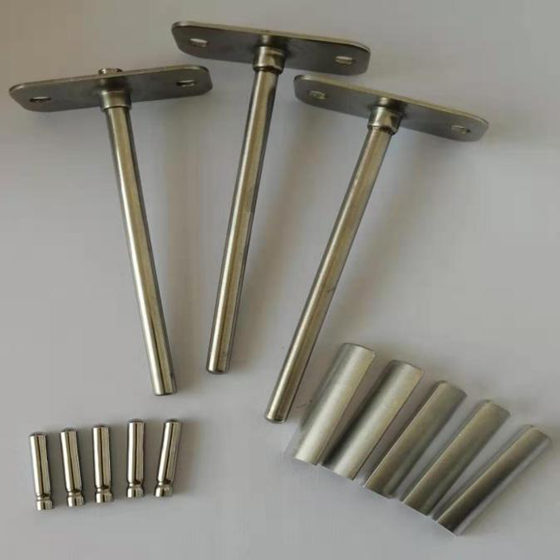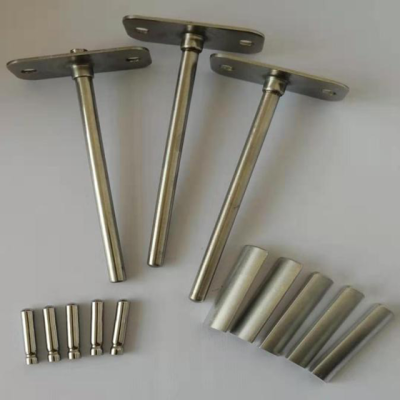The Crucial Role of Temperature Sensor Housing
Temperature sensors are ubiquitous—embedded in machines, labs, pipelines, vehicles, and even in smart homes. But while the sensor itself garners the spotlight, its housing often plays a more pivotal role than most realize. The housing is not merely a container. It is a critical interface that guards the sensor against harsh elements, ensures accurate readings, and preserves operational integrity.
Why Housing Design Matters More Than You Think
Improper or suboptimal housing can lead to measurement drift, corrosion, or outright sensor failure. Whether monitoring the superheated fluids of a power plant or the delicate fermentation conditions in a food lab, the housing must strike a perfect balance between shielding the sensor and enabling it to “feel” the environment with fidelity.
Understanding Temperature Sensor Housing
What Is Temperature Sensor Housing?
Temperature sensor housing refers to the protective casing that envelops the sensing element. This casing is engineered to safeguard the sensor against environmental, mechanical, and chemical stresses while enabling efficient thermal transfer from the target medium to the sensor core.
Key Components and Their Functions
A typical sensor housing includes a probe sheath, a mounting thread or flange, and sometimes, a connection head or cable gland. Each component has a defined purpose—ensuring ease of installation, securing against ingress, and optimizing heat conduction. Internal design considerations, such as the placement of the thermowell or filler material, further impact sensor longevity and accuracy.
Types of Temperature Sensor Housings
Industrial-Grade Housings
Built for resilience, industrial-grade housings are designed for high temperatures, extreme pressure, and corrosive conditions. Common in petrochemical plants and manufacturing lines, they typically feature rugged threads, robust welds, and high-grade stainless steel alloys.
Sanitary and Hygienic Housings
In pharmaceuticals and food processing, hygiene is paramount. Sanitary housings often feature smooth, crevice-free designs and electropolished finishes to prevent microbial contamination. They comply with standards such as 3-A and FDA guidelines.
Submersible and Harsh Environment Enclosures
For underwater or sub-zero applications, sensor housings must be fully sealed, pressure-resistant, and non-reactive. Specialized coatings and hermetic sealing techniques are employed to ensure long-term reliability in marine, cryogenic, and chemical-processing environments.
Material Considerations for Optimal Performance
Stainless Steel, Aluminum, and Thermoplastics
Material choice is dictated by the application. Stainless steel (304, 316L) is favored for its corrosion resistance and high strength. Aluminum, though lighter, is used where weight reduction is crucial. Advanced thermoplastics like PEEK or PTFE are selected for chemically aggressive environments.
Corrosion Resistance, Thermal Conductivity, and Mechanical Strength
Each material comes with trade-offs. Stainless steel excels in durability but may slightly impede rapid thermal transfer. In contrast, thin-walled aluminum housings offer faster thermal response but lower mechanical endurance. The right housing material harmonizes thermal properties with physical robustness and environmental compatibility.
Precision and Calibration Influence
How Housing Affects Sensor Accuracy
Sensor housings influence not just protection but also measurement precision. Excessive insulation, thick wall materials, or poor thermal conductivity can cause delayed readings or temperature damping, undermining the purpose of real-time monitoring.
Thermal Lag and Response Time Factors
Thermal lag is the delay between the actual temperature change in the environment and the sensor's recorded response. A well-engineered housing minimizes this lag through optimized geometry, direct media contact, and minimal heat sink effects. Engineers must consider thermal diffusivity when selecting or designing sensor housings.
Protection from Environmental Stressors
Dust, Moisture, Vibration, and Chemical Exposure
Industrial and outdoor settings expose sensors to a barrage of stressors. Housing must mitigate risks from particulate ingress, water vapor, corrosive agents, and physical shocks. Advanced gaskets, epoxy encapsulation, and reinforced mechanical interfaces enhance environmental survivability.
IP and NEMA Ratings Demystified
IP (Ingress Protection) and NEMA (National Electrical Manufacturers Association) ratings define protection levels. For example, an IP68-rated housing is fully dust-tight and suitable for continuous submersion, while NEMA 4X offers corrosion resistance and protection against hose-directed water. Understanding these ratings is vital for specifying sensor housings for demanding conditions.
Applications Across Industries
Manufacturing, Food Processing, HVAC, and Energy
In industrial automation, temperature sensors help regulate machinery performance. In food production, precise thermal tracking ensures safety and quality. HVAC systems rely on responsive sensors for climate control, while energy sectors deploy them in geothermal, solar, and nuclear applications to monitor critical variables.
Case Examples: Sensor Housing in Action
A dairy processing plant might use a tri-clamp sanitary housing to monitor milk pasteurization, maintaining safety without contamination. Meanwhile, in a gas turbine, a mineral-insulated thermocouple housed in Inconel protects against 1000°C+ temperatures and oxidative stress. Each use case underscores the housing’s crucial role in ensuring data reliability and process efficiency.
Innovations and Future Trends
Smart Housings with Integrated IoT
Modern housings are no longer passive. IoT-enabled enclosures now come with integrated diagnostics, predictive maintenance alerts, and real-time telemetry. These housings can detect degradation, seal failure, or insulation breakdown before the sensor fails.
Miniaturization and Material Science Advancements
Nanostructured coatings, additive manufacturing, and ceramic composites are pushing the boundaries of what's possible. New designs are thinner, stronger, and smarter, delivering unprecedented performance in compact footprints.
Conclusion
Balancing Protection, Precision, and Performance
The optimal temperature sensor housing is a synergistic combination of design, material science, and application-specific engineering. It must protect without obstructing, enhance without interfering, and endure without compromise. As sensors become smarter and environments more demanding, housing technology will continue to evolve—quietly enabling the data-driven world behind the scenes.








